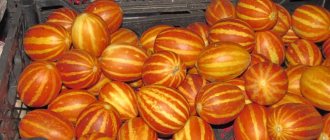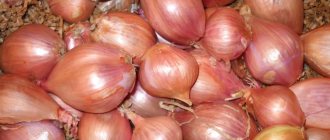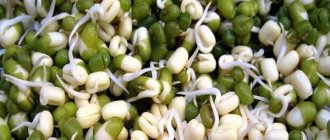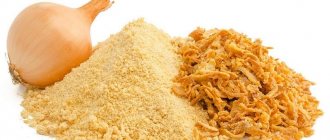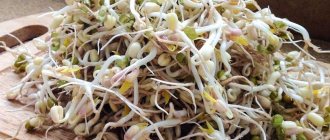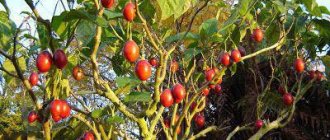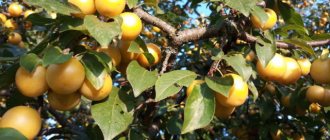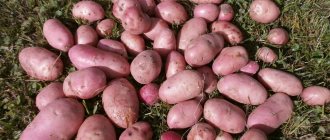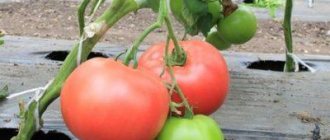Description of the melon variety
The variety was named for its elongated oblong shape. Its homeland is Uzbekistan, in this country the Torpedo melon can be found in every yard. The plant likes a warm climate and fertile, nutritious soil.
Distinctive features
Late-ripening melon ripens in 90–100 days from planting. The crop is grown both by seedlings and without seedlings.
The plant has many lashes, small leaves of light green color. Melon is thermophilic, so it is recommended to plant it in fertile and sunny beds.
Fruit characteristics and yield
The surface of the melon is yellow, with a white embossed mesh. The shape is elongated, the weight of the fruit is about 5 kg. The skin is thick and resistant to damage, so the Torpedo can be stored for a long time without losing its beneficial properties.
The pulp is very aromatic and sweet, white-cream in color. Productivity is high - from 1 sq. m harvest from 5 to 7 kg of delicious sugar fruits.
Composition, properties, calorie content and benefits
Why is melon good for health? After all, it is recommended even for preparing dietary dishes. The fragrant juicy fruit has a valuable supply of vitamins and minerals, such as calcium, potassium, phosphorus, iron, zinc.
90% of the pulp consists of liquid, so you can eat it even if you are overweight. 100 g contains 34 kcal .
The following beneficial properties of melon are noted:
- removes toxins and waste from the body;
- increases the level of hemoglobin in the blood;
- has a rejuvenating effect;
- Vitamin C in melon has an antimicrobial effect;
- Vitamin B is responsible for the healthy functioning of the gastrointestinal tract.
What are the benefits of melon
Since ancient times, healers have used melon as an effective medicine. The legendary Avicenna treated patients with colds and gout with melon peels and seeds. Modern doctors recommend melon for constipation, hemorrhoids, bladder and liver diseases, as well as for the prevention of cardiovascular diseases and atherosclerosis. This berry improves blood formation and calms the nervous system.
In Europe, cleansing the body with melon juice is very popular. To do this, you should drink melon juice on an empty stomach every day for 20 days with the addition of absolutely any berries. The pulp of the “Torpedo” melon is white and rich in vitamins C, group B, silicon, lycopene, carotene, folic acid, fiber and enzymes that improve intestinal function.
Melon is ideal for fasting days. Its calorie content is low. 100 grams of melon pulp contains about 40 calories.
How to choose fruits when purchasing
When choosing a Torpedo in a store or on the market, it is important to pay attention to the appearance. The melon should be large and firm, without scratches or other damage . A characteristic sign of maturity is a dull sound when tapped .
Aroma is also of great importance. The ripe one has a strong characteristic odor; if it is not there, it means the fruit is not yet ripe. The tail should be hard and dry.
Important ! Be careful when purchasing from roadside stalls. Often the fruits lie on bare ground, which is why they can become infected with dangerous infections. Eating such melon can lead to poisoning.
Does Torpedo melon ripen at home?
Sometimes it happens that the fruit needs additional time to obtain sweetness, and this is impossible to do in melon. Based on this, many people have a question about how to ripen Torpedo melon at home and is it even possible? This can be done, but the taste of the final result will be slightly lower than when ripening in the garden. To do this, place the melon in a sunny place and wait several days. It is important to know that such manipulations can only be done with unripe fruit; the green one will have to be thrown away.
How to grow your own
The Torpedo variety is grown in two ways: seedlings and without seedlings. The first is suitable for regions with short summers and sudden weather changes; the second is for warm and temperate climates. Let's look at each method in detail and learn the secrets of growing.
The subtleties of growing melons / How to grow a melon from seed to harvest
Landing
A necessary preparation step is disinfection. Seeds are disinfected using aloe juice, Bordeaux mixture, and succinic acid solution. The seed material is soaked for 24 hours and then placed in a damp cloth for germination. Germination shows the germination of seeds and increases their immunity.
Then do one of the following:
- In the seedling method, seeds are planted in prepared soil in any convenient container (flower pot, plastic cups, peat tablets). Grow seedlings for 2-3 weeks in a warm and sunny place. It is recommended to keep it near the battery or on the windowsill. Water the seedlings as the soil dries out, only with warm water. When transplanting into the garden, the sprouts are carefully placed in dug up and cleared of debris beds.
- With the seedless method, the seeds are immediately planted in the garden after disinfection. First, the soil is dug up and fertilized with liquid manure or vermiculite, a mineral substance that increases germination. During the first week after planting, each sprout is covered with polyethylene to protect it from winds and cold temperatures. Melon loves a mixture of sandy and loamy soils, so it is important to choose the right planting site.
Care
The basis of any care is timely and competent watering. Moisten the beds once every 5–7 days only with warm water (optimal temperature is about +18 °C). 2 liters are consumed per bush. If the summer is hot and rainy, the amount of water is reduced.
Once every 2 weeks, instead of regular water, use an infusion of burdock or nettle. They protect against diseases and prevent the development of weeds. Before each watering, it is recommended to loosen the soil so that the water gets as deep into the roots as possible.
The second element of healthy melon development is the organization of fertilizing. Both organic substances and mineral complexes are used. Fertilize the Torpedo variety once every 10 days.
Preference is given to the following fertilizers:
- dry wood ash;
- liquid bird droppings;
- urea;
- superphosphate;
- monopotassium phosphate;
- mineral complex "Kimira";
- growth stimulants “Kornevin” or “Heteroauxin”;
- spraying with whey solution.
Important ! Don't forget about loosening and removing weeds. These procedures make the soil more nutritious and lighter, protect against pests and maintain healthy microflora in the beds. Loosening is carried out once a week. The recommended depth is 10–15 cm.
Features of cultivation and possible difficulties
In the northern regions of the country, Torpedo melon is grown mainly in greenhouses or greenhouses . Polycarbonate structures are excellent. They are lightweight, transmit sunlight, affordable and easy to install. Before planting in the greenhouse, all hard surfaces are disinfected with a solution of potassium permanganate. The structure is characterized by heat and high humidity, so it is important to monitor the condition of the ground. The greenhouse is ventilated daily by opening the windows.
A mandatory procedure is the formation of bushes and pinching the tops. As soon as 5 leaves appear, the shoot above the fourth leaf is removed. In the future, it is important to leave two main shoots above each leaf, no more.
Long lashes are unraveled and placed on the ground, sprinkled in several places. A support made of wooden boxes and stones is placed under the largest and largest fruits. This is done so that the melons do not rot when they come into contact with wet soil.
Diseases and pests characteristic of the variety
Torpedo melon is resistant to major crop diseases. However, occasionally, even if all agrotechnical rules are followed, she becomes ill with anthracnose. The leaves become covered with brown and yellow spots, wither and dry out. If measures are not taken in time, the melons become deformed and rot. For prevention, spraying with a solution of milk and iodine is used (500 ml of milk and 20 g of iodine per 5 liters of water). If the disease has already appeared, the plant is treated with Bordeaux mixture or sulfur solution.
Another disease of the variety is powdery mildew. It appears in the form of a white coating on the leaves, which becomes more and more every day. There are several reasons for infection: increased nitrogen content in the soil, sudden temperature changes, high humidity, dense planting. To combat powdery mildew, use the preparations “Bravo” or “Mikosan”.
The most common pest in garden beds is the melon fly . The miniature insect appears due to contaminated soil or improper care. The fly lays larvae in the fruit, which eat the melon from the inside. It is impossible to detect the insect with the naked eye, so it is recommended to regularly inspect the bushes in sunlight. To combat the pest, copper sulfate or the drug “Topaz” is used.
WE WILL PROTECT MELOON CROPS FROM MELON FLY
Growing Torpedo melon
Depending on the size of the allocated area on the site, you can leave the stems creeping along the ground or tie them on trellises. Regardless of the method chosen, it is important that the light constantly falls on the fruit; this is the only way to achieve the full taste. For good growth and fruiting, the Torpedo melon requires the following work:
- Once a month, treatment is carried out with a solution of cow dung.
- Watering is carried out during the growth of green mass and formation of fruits. When ripe, the amount of moisture is reduced so that the harvest is not watery.
- With the creeping method, mulch is laid under the fruit to minimize contact with the ground and prevent rotting.
- In cold regions, Torpedo melon with green stripes or other types need to artificially reduce yield by pinching the wattle. There should be no more than 4 ovaries left on the bush.
- To maintain a healthy appearance, treatment with fungicides and insecticides is required. Among all, “Fufanon”, “Inta-Vir” or “Healer” are distinguished.
Growing Torpedo melon on the balcony
Since the plant has long vines, the growing area must be large. In order for the Uzbek melon variety to produce a harvest, the following rules must be followed:
- To place the lash up, you need to build trellises or gratings.
- The dimensions of the container for planting seeds are 60x60x80 cm. It is recommended to take wooden boxes or barrels.
- The balcony must be on the sunny side, otherwise additional lighting will need to be created.
- For full growth, the room temperature should be +25°C.
Considering how much the Torpedo melon weighs, it is clear that when grown vertically, the fruits need supports for the vines. They are placed in a net and tied to any surface that can support the weight. Otherwise, the fence will break. Features of care include the following manipulations:
- Regular watering
. They do this once every three days. The water should be warm and settled. - Fertilizer application
. The compositions must have a large amount of minerals. Before the formation of ovaries, Torpedo melon needs nitrogen, and then potassium and phosphorus. - Bush formation
. After the formation of 6 petals, pinching is carried out. Then the wickerwork is tied to the twines. Only a couple of fruits are left on the bush, the rest are removed. - Disease and pest control
. For diseases they are sprayed with the liquid product “Fitosporin”. Pests are treated with Fitoverm.
Harvesting and application
Harvest in mid-late August. Ripeness is determined by its sweet aroma and hard rind . It is recommended to pick the fruits together with the stalk so that they retain their taste and freshness longer. The melon is wiped with a dry cloth and laid out on the beds for 2-3 days, then put away in the cellar or basement. It is important that the room is regularly ventilated. If you leave the crop in the garden beds, the taste begins to become bitter.
A variety of snacks and desserts are prepared from Torpedo melon: cakes, cocktails, fruit salads, smoothies and sorbets. The fruits go well with ice cream and mint and quench your thirst. Part of the harvest is consumed fresh, the other is used for cooking. The sweet pulp goes harmoniously with milk porridges.
When can you buy Torpedo melon?
As you know, the period of normal ripening of the fetus is August. Based on this, ripe Torpedo melon appears on the shelves at this time. This means that everything that is sold before this period is not recommended for consumption, because the fruits may contain large amounts of nitrates and other substances that accelerate ripening. Understanding when the Torpedo melon ripens and how to buy a tasty fruit, we note that it is not recommended to buy fruits in unauthorized places, for example, near the road, because the risk that it will absorb harmful substances from the air increases.
Advantages and disadvantages of the variety
The advantages of the Torpedo variety include juicy and tender pulp, excellent taste, and versatility in use. The product is low in calories and contains useful vitamins and minerals. Eating melon helps fight stress, relieve tension and fatigue. The Torpedo variety consistently shows high yields.
Among the shortcomings, they note the fact that Torpedo is grown only in the southern regions of the country. In areas with temperate and cold climates, the variety does not have high yields. Another disadvantage is the need to form a bush.
How to determine ripeness
To determine ripeness and not pick an unripe fruit, the following features must be taken into account:
- the skin should be a uniform yellow color;
- when cut, the pulp should be white and soft in consistency;
- when tapping the fruit, a dull sound occurs;
- the melon should have a pleasant aroma;
- If you run your fingernail over the peel, it comes off easily.
See also
Description of hybrid melon Aikido F1 and features of caring for the variety
Read
The fruit has a bright peel color and a pleasant smell that spreads over a long distance.
Reviews from summer residents
Despite the fact that Torpedo melon is one of the most popular in our country, there are also mixed reviews about it.
Galina, Samara: “ I’ve been growing Torpedo melon for five years in a row. Always happy with the harvest. Melons are large, aromatic, very sweet. I like to eat them fresh before they go bad.”
Maria, Rostov-on-Don: “I planted the Torpedo variety for the first time. I followed the care recommendations: watered and fertilized according to schedule, formed a bush and pinched the top. However, in mid-July the plant became ill with powdery mildew. We managed to cure it, but part of the crop died.”
Dmitry, Sochi: “I recommend Torpedo to everyone who has not tried it yet! Melon makes delicious desserts. I make fruit salads and fresh juices; adults and children like them. A choice of dishes for every taste."
How to cut a Torpedo melon?
This product does not have a correct presentation; everyone chooses for themselves how it is more convenient for them to do it. At home and cafes they do this in different ways, but this does not mean at all that these methods cannot be borrowed. Let's look at how to properly cut a Torpedo melon:
- The pulp is cut in half and then cut into slices.
- You can remove the skin, cut the slices into cubes and eat with a fork.
- Pieces can be strung on skewers and served as a fruit kebabs.
- The fruit is cut and the pulp is made into balls using a special spoon.
Seeds
End of April - sowing seeds for seedlings.
Seeds are chosen that are high quality and large.
For etching, they are placed in gauze and a weak solution of potassium permanganate for about 6 hours. Then the seeds are germinated, and after they are pecked, they are planted. Sowing depth 1.5 cm. Germination temperature 25 degrees. To improve germination and the formation of an early harvest, the seeds are hardened. To do this, the swollen seeds are stored at a temperature of -1 for about 2 days.
Since the Torpedo melon is a late-ripening variety, it is easier to obtain its harvest using the seedling planting method. Grown sprouts do not tolerate transplantation well, the root system may die, so planting melon seedlings begins with planting seeds in separate cups.
Growing melon seedlings
The soil is filled with previously prepared or purchased soil (peat (1), sand (1), humus (2)). If the cups are small, then the seedlings should be replanted after 15 days; if the diameter is up to 10 cm, then after 30-35 days. The plant is a light-loving plant, so it is worth considering additional lighting so that the seedlings do not stretch out.
This is important: do not put the seedlings in a cool place. Overcooling of the root system will lead to the death of the plant.
Harm and contraindications
Even healthy people need to consume melon correctly. You should not combine fruits containing fiber with yogurt, kefir, fermented baked milk, yogurt, or cold water, otherwise you may cause an upset stomach.
It is not recommended to eat melon on an empty stomach, as this can lead to bloating, pain in the intestines, and the formation of gases. The product should be enjoyed before and after meals at least 2 hours before.
An adult can eat no more than one and a half kilograms of melon pulp per day, but do this not at once, but in two or three times. Children over 12 months are given a maximum of 100 g of melon per day.
See also: The best varieties and features of growing Cantaloupe melon
When consuming more plant products, sucrose entering the intestines provokes colic and bloating.
Vegetables are contraindicated:
- patients with diabetes;
- stomach ulcer;
- gastritis.
Expert opinion
Stanislav Pavlovich
Gardener with 17 years of experience and our expert
Ask a Question
Attention! Green Torpedo melon is harmful to humans because it contains carcinogenic substances. People suffering from kidney and liver pathologies should use this juicy product with caution.
Melon care
During the growing season, regular irrigation is required. During the flowering period it is necessary to reduce them, which promotes the development of both sexes. Irrigation is resumed at the beginning of the ovaries. To accumulate sugar in the melon and extend the shelf life of the fruit during ripening, water is removed.
To get a good harvest, three conditions must be met:
- Protect plants from late frosts.
- Shape, shrink and remove excess ovaries.
- Systematically stimulates and stimulates plant growth.
Use organic and mineral fertilizers as fertilizers after planting during the formation of side shoots and buds. Weed control should be carried out regularly.
It is important to avoid thickening of plants and remove damaged ovaries and whips.
Melon harvesting is selective. When eating in the near future, choose a ripe melon, and for storage - a greenish one. The maturity of the fruit is characterized by the appearance of rings around the stem and a specific smell.
Following simple rules allows the grower to grow a good plant from July to October and enjoy healthy and flavorful melon. Dried melon retains all its properties and taste.
Watch the video with the torpedo melon:
Page 2
Many people who want to grow melons cannot decide what kind of melon they want to grow. After all, there are hundreds of varieties, and the question here is which is better and which is suitable for the soil - this is already a question.
Ethiopian melon is a large to medium-sized early-early variety characterized by its unique flavor and taste.
The advantage of this variety is that it can be stored for a long time and is easy to transport. More information about growing melons in Ethiopia can be found in our article.
Selecting a site and planting seedlings
Planting of seedlings occurs in June on the 35th day after germination in a warm bed under a film cover or in a greenhouse.
The soil for growing melon must be fertile, for which purpose compost or humus, as well as mineral fertilizers, are added to it in advance, in the fall.
In addition, the acidity of the soil should be neutral: sandy loam or chernozem (the main methods for determining soil pH are described here).
The place for growing is unshaded, preferably open to sunlight, protected from gusts of cold wind.
Advice for gardeners: do not plant melons after pumpkins. Since the earth is poor in essential microelements and can be affected by similar diseases.
At this point, the seedlings have 5-7 true leaves. Planting pattern 40-50*80-100. The soil is well moistened, and then the cups are placed in the holes. The root collar is not buried. The upper part of the earth is mulched with ordinary sand. During the period of plant establishment, watering is recommended with warm water.
Planting seedlings in the ground
Gardeners from the southern regions can sow seeds directly. In May, the bed is prepared, boiling water is poured over it, and then the seeds are placed in open ground.

